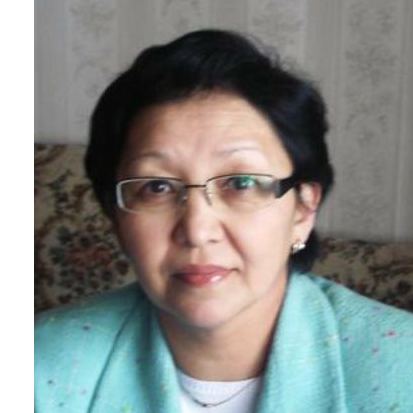The impact of the environment on the contact potential difference of metal machine parts
DOI:
https://doi.org/10.31489/2019No1/99-108Keywords:
electrons work function, contact potential difference, metal, surface, temperature, pressure, humidityAbstract
In this paper we consider the influence of environmental parameters on the electrons work function and the contact potential difference of metal parts of machines. Experimental studies have been carried out, including measurements of the contact potential difference on samples from Al, Ti and Ni by the Kelvin-Zisman method at different temperatures, pressures and relative humidity, as well as in non-equilibrium and equilibrium environmental conditions. Measurements of the contact potential difference were carried out by the device "Surface-11". Atmospheric parameters were measured by the digital meteorological station HAMA EWS-800. The results of measurements of the contact potential difference of metals were processed by methods of mathematical statistics. The results of experimental studies have shown a direct effect of changes in ambient temperature on the contact potential difference and the electrons work function of metal samples, which has an average correlation. It is found that atmospheric pressure and relative humidity have a weak effect on the contact potential difference and the electrons work function of the metals under study, their influence can be neglected. The effect of equilibrium and non-equilibrium environmental parameters on the contact potential difference and electrons work function of metal samples is studied. The results confirming the reduction of the contact potential difference (increase in the electrons work function) of metals, as well as an increase in the mean square deviation of the measurement results under non-equilibrium environmental conditions are obtained. On the basis of the research it is recommended to measure the contact potential difference of metals in the laboratory.
References
"1 Oleshko V.S., Yurov, V.M., Fluctuation of the contact potential difference in the determination of the electrons work function from the structural materials of the ionization method. Proceedings of the 10th Intern. Conf. ""Chaos and structures in nonlinear systems. Theory and experiment"". Almaty, al-Farabi KazNU. 2017, pp. 165 – 169.
Vladimirov A.F. Thermodynamic, crystallographic and defect-deformation aspects of changes in the electrons work function. Diss. ... candidate of phys.-math. scien. Ryazan, Ryazan state agricultural Academy, 2001. 211 p.
Shebzukhova I.G., Arefev L.P. Anisotropy of electron work function of 3d metal crystals. Proc. of the Russian Academy of Sciences. Series physical. 2015, Vol. 79, No. 6, pp. 896 – 899.
Foreyt I. Capacitive sensors of non-electric quantities. Translated from the Czech. V.I. Dmitriev Library on automation. Moscow-Leningrad.: Publish. House ""Energy"", 1966, 160 p.
Mamonova M.V., Kozhakhmetov S.Z., Fomin P.A. Calculation of electrons work function from the surface of copper and tungsten during adsorption of monolayer ferromagnetic films. Bulletin of Omsk University. 2017, No. 2 (84), pp. 51 – 55.
Markov A.A. Electron work function and metal antifriction. Moscow: Moscow State Institute of Radiotechnics, electronics and automation (Tech. Un-t), 2004, 207 p.
Babich A.V., Pogosov V.V., Reva V.I. Calculation of the probability of capture of positrons by vacancy, metal vacancy and assessment of contribution to the electrons work function and positrons. Physics of metals and metallography. 2016, Vol. 117, No. 3, pp. 215 – 223.
Rahemi R., Li D. Variation in electron work function with temperature and its effect on the young's modulus of metals. Scripta Materialia. 2014, Vol. 99, pp. 41 – 44.
T. Durakiewicz, A.J. Arko, J.J. Joyce, et al. Thermal work function shifts for polycrystalline metal surfaces. Surface Science. 2001, Vol. 478, Issues 1-2, pp. 72 – 82.
Matosov M.V. Physics of the electron work function. Moscow, MAI, 1989, 180 p.
Surovoy E.P., Titov I.V., Bugerko L.N. Contact potential difference for lead, silver and thallium azides. Proceedings of Tomsk Polytechnic University. 2005, Vol. 308, No. 2, pp. 79 – 83.
Loskutov S.V. Regularities of formation of energy relief of metal surface. Visnyk Zaporzhia sovereign University. 1999, No. 1, pp. 138 – 142.
Babich A.V., Pogosov V.V. The electron work function and the surface tension of a metal surface with a dielectric coating. Physics of metals and metallography. 2008, Vol. 106, No. 4, pp.346 – 354.
Koritsky Yu.V., Pasynkov V.V., Tareev B.M., et al. Handbook of electrical materials. Vol.1. Moscow, Energoatomizdat, 1986, 368 p.
Oleshko V.S., Samoylenko V.M. Application of the device for measuring the contact potential difference ""Surface-11"" in nondestructive testing of machine parts. Defense complex — scientific and technical progress of Russia. 2011, No. 2, pp. 3 – 6.
Nochovnaya N.A., Nikitin Ya.Yu., Savushkin A.N. Investigation of changes in the surface properties of titanium alloy blades after chemical treatment of carbon-containing contaminants. Bulletin of the Moscow aviation Institute. 2019, Vol. 26, No. 1, pp. 236 – 243.
Betsofen S.Ya., Osintsev O.E., Knyazev M.I., Dolgova M.I., Kabanova Yu.A. Quantitative phase analysis of alloys of the system Al-Cu-Li-Mg. Bulletin of the Moscow Aviation Institute. 2016, Vol. 23, No.4, pp. 181 – 188.
"















